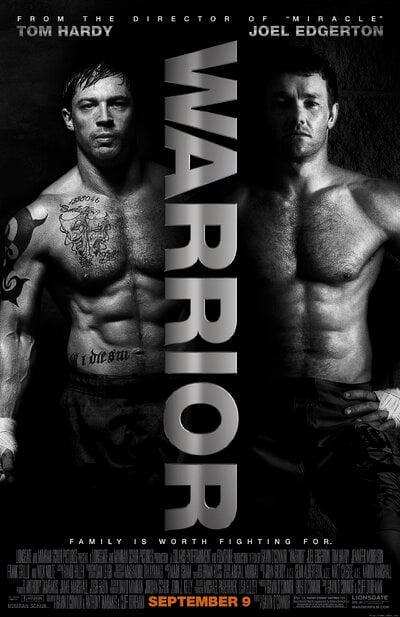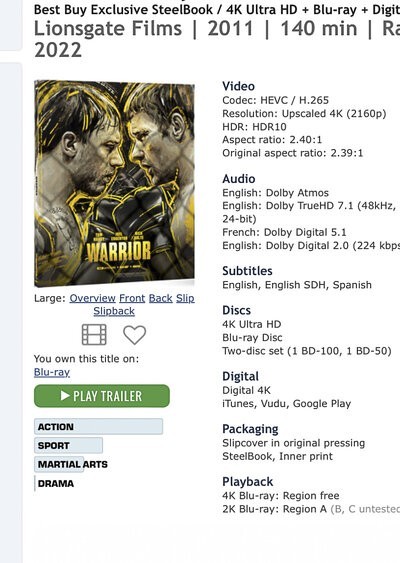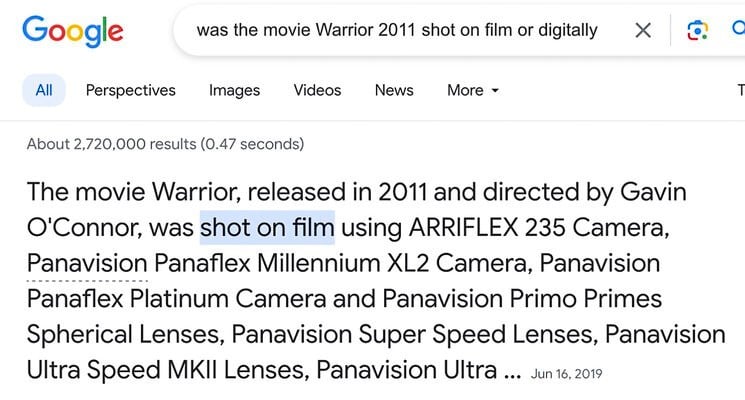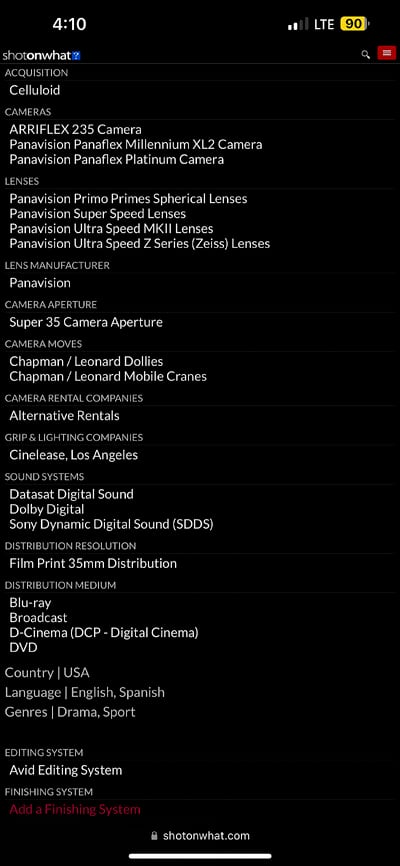Hi.
OK, I’m very disturbed to learn this and I feel foolish at the same time because this may have been common knowledge to everybody here except myself.
I grabbed the Best Buy copy of "Warrior" 2011, Nick Nolte, Tom Hardy and Joel Edgerton in a Gavin O'Connor powerhouse film.

I went online and found that it was a 4K disc created from the 2K digital intermediate
blu-ray.com said it was upscaled
but as I continued with my research, I found it out that it was shot on FILM
I was extremely confused, I realized this must be tactic used by movie studios that don't want to go through the process of remastering films from the original camera negative… So they simply take the digital intermediate and make the 4K UHD discs from that source
I don't know if this is normal as I just found out about this two hours ago and it highly disturbed me
Does anybody know if this is common practice?
Mr. Harris can you comment? @Robert Harris
Any explanation would help me understand this.
it must be financial I’m thinking because why in the world would you make a 4K UHD physical disc of FILM shot on celluloid using a subpar 2K digital intermediate.
As a Cinephil, I’m bothered now.
How often is this happening?
my research is below
Bluray.com stating it has been upscaled:

Google search confirming it was shot on film.

Confirmation from the website shotonwhat.com

OK, I’m very disturbed to learn this and I feel foolish at the same time because this may have been common knowledge to everybody here except myself.
I grabbed the Best Buy copy of "Warrior" 2011, Nick Nolte, Tom Hardy and Joel Edgerton in a Gavin O'Connor powerhouse film.

I went online and found that it was a 4K disc created from the 2K digital intermediate
blu-ray.com said it was upscaled
but as I continued with my research, I found it out that it was shot on FILM
I was extremely confused, I realized this must be tactic used by movie studios that don't want to go through the process of remastering films from the original camera negative… So they simply take the digital intermediate and make the 4K UHD discs from that source
I don't know if this is normal as I just found out about this two hours ago and it highly disturbed me
Does anybody know if this is common practice?
Mr. Harris can you comment? @Robert Harris
Any explanation would help me understand this.
it must be financial I’m thinking because why in the world would you make a 4K UHD physical disc of FILM shot on celluloid using a subpar 2K digital intermediate.
As a Cinephil, I’m bothered now.
How often is this happening?
my research is below
Bluray.com stating it has been upscaled:

Google search confirming it was shot on film.

Confirmation from the website shotonwhat.com

Last edited:





